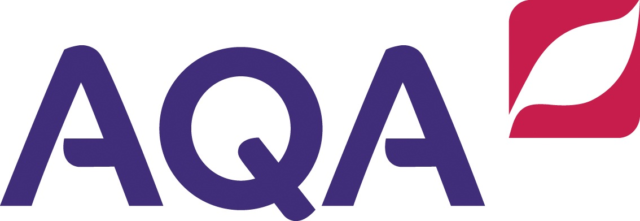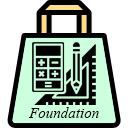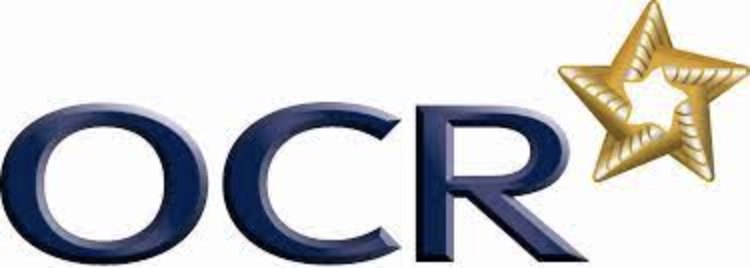

The exam builder is designed to create clear and concise assessments aligned with Maths White Board descriptors.
The exam builder is designed to create clear and concise assessments aligned with Maths White Board descriptors. You can utilize the search tool below to customize your own assessment, or as a subscriber, you can select from one of the commonly occurring topic takeaways or produce shadow paper material.
To unlock the full potential of this resource and many more on Maths White Board, purchase a 12 month subscription. To find out more about how you can subscribe, please click the following button for more information.
The search tool is limited until you have an active subscription.
Search by skill
Search by preview
To begin, search for a specific skill. Your search will then filter the existing exam based questions to hone in on your skill. Select as many questions as you like to build the test.
If a particular question doesn't exist yet, you may need to use the other search tool to generate the question first.
Consider a circle divided into 8 equal parts.
Two parts are shaded in red and three parts are shaded in blue.
What fraction of the circle is not shaded?

Consider a rectangular diagram that is divided into 8 equal parts.
3 parts are shaded in red and 2 parts are shaded in green.
What fraction is needed to complete the diagram so that all parts are shaded?

Consider a circle divided into 8 equal parts.
3 parts are shaded in red, 1 part is shaded in blue and the rest are left unshaded.
What fraction of the circle is unshaded?

John has 3/8 of a pizza left and his friend, Sarah, has 1/8 of a pizza left.
If they combine their leftovers, what fraction of a pizza will they have in total?

John has 3/8 of a pizza left and his friend Mary has 1/8 of a pizza left.
If they combine their pizza, what fraction of a whole pizza do they have in total?

John and Mary are sharing a pizza.
John eats 3/7 of the pizza and Mary eats 4/7 of the pizza.
How much of the pizza do they eat together?

John has 2/5 of a pizza and Sarah has 1/4 of the same pizza.
How much pizza do they have in total? Express your answer in simplest form.

A recipe for a cake requires 1/4 cup of sugar and 1/6 cup of oil.
What fraction of a total cup does the required ingredients for sugar and oil take up?

Subtract the fraction 3/4 from the fraction 5/6.

Calculate the following:
2/3 - 1/4 + 1/6

Calculate the following:
2/3 - 1/6 + 5/9

Calculate the following:
4/5 - 1/4 + 1/6

John has 21/3 pizzas left after a party.
His friend Sam eats 11/2 of the pizzas.
How many pizzas will John have left?

John has 31/2 pizzas and Sarah has 23/4 pizzas.
How many pizzas do they have in total?

John has 21/2 pizzas and his friend, Sarah, has 13/8 pizzas. They decided to combine their pizzas.
How many pizzas do they have in total?

Calculate the sum of 3x/4 and 2x/5.

Given the algebraic fractions 1/a and 1/b, calculate the difference between these fractions.

Given the algebraic fractions 3x/4 and 2x/3, calculate the difference between these fractions. Simplify your answers.

Jared says:
The area of the square is larger than the area of the circle due to the side length of the square being larger than the radius of the circle.
Is Jared correct? You must show your working.

A circle has a radius of 7cm.
Calculate the area of the circle. Give your answer to 2 decimal places.

A circle has a radius of 4 cm.
Calculate the area of the circle. Give your answer in cm2 to 2 decimal places.

A circle has a diameter of 6 cm.
Using π = 3.14, calculate the area of the circle.

A circular patio is to be covered in gravel.
The diameter of the patio is 10 meters.
Gravel is sold in bags costing £3.50 per square meter.
Calculate the total cost of covering the patio in gravel.

A circle has a diameter of 10cm.
What is the area of the circle? Give your answer to 2 decimal places.

A garden has been designed with a circular lawn.
The designer ordered enough lawn to fill 78.5 m2.
Calculate the radius of the circular lawn. Give your answer to the nearest integer.

A square with a side length of 10 cm has an area equal to that of a circle.
Calculate the radius of the circle to two decimal places.

A circular park has an area of 628 square meters.
Without a calculator, determine an approximate value for the radius.

A pizza company charges 7p per square centimeter of pizza and £4.99 for delivery.
Bryan orders one quarter of a 20 cm radius Hawaiian pizza for delivery.
How much will Bryan need to pay (in £)?

A company is planning to install an awning in front of their newly constructed office building.
One side of the awning is a quadrant and will be made from fabric.
Calculate the amount of material required to cover one side of the awning. Give your answer to 2 decimal places.

Triangle ABC is given below.
Point M is the midpoint of AC.
A sector is drawn inside triangle ABC with radius AM.
If angle BAC = 90°, AB = AC and the area of triangle ABC is 18 cm2, calculate the shaded area. Give your answer to 2 decimal places.

Consider a sector of a circle, AOB, with centre O and radius 9 cm.
Angle AOB = 120°.
Sides AO = BO.
Calculate the area of the sector.
Leave your answer in terms of π.

A sector has been drawn with radius 8cm.
The arc length of the sector is 10cm.
Calculate the area of the sector.

A manufacturer is designing a new door stop. An early design shows the cross section of the door stop below:
Calculate the area of the cross section. Leave your answer in exact form.

A circle has a radius of 10 cm.
A sector of this circle has an area of 50 cm2.
Calculate the angle of this sector in degrees.

A circle has a radius of 8 cm.
A sector of this circle has an area of 64 cm2.
Calculate the angle of this sector in degrees.

A circular garden has a radius of 6 meters. A sector of this garden is used to plant flowers. The area of the flower planting sector is 28.26 square meters. Calculate the angle, in degrees, of the sector used for planting flowers.
By looking at the graph below, determine the coordinate of the y-intercept of the straight line.

A straight line graph that passes through the points (2, 3) and (4, 7).
Determine the coordinate of the y-intercept of this line.

A straight line graph passes through the points (1, 5) and (5, 9).
Determine the coordinate of the y-intercept of this line.

A straight line graph passes through the points (3, 7) and (4, 10).
Calculate the gradient of the line.

A straight line graph passes through the points (2, 3) and (3, y).
Find the value of y given that the gradient of the line is -4.

A straight line graph crosses the y-axis at (0, 3) and passes through the point (1, 5).
Calculate the equation of the line in the form y = mx + c.

The local council have built a skatepark ramp.
The ramp has a height of 80 cm as shown below.
Safety inspectors would consider the ramp to be safe if it has a gradient of 0.25 ± 0.01.
Determine whether the ramp is suitable. You must show your working.

Consider a straight line graph that passes through the points (2, 3) and (6, 11). Calculate the equation of the line in the form y = mx + c.
A straight line graph passes through the points (2, 3) and (6, k).
The gradient of the line is 2.
Calculate the value of k.

Consider a straight line graph that passes through the points (2, 8) and (6, 2). Calculate the equation of the line in the form y = mx + c, where 'm' is the gradient and 'c' is the y-intercept.
The graph of a linear equation passes through the points (2, 8) and (6, 2). Determine the equation of the line in the form y = mx + c.
A straight line passes through the points (2, 8) and (6, 2).
Calculate the gradient of the line.

Consider a straight line graph that passes through the points (2, 5) and (6, 17). Determine the equation of the line in the form y = mx + c, where 'm' is the gradient and 'c' is the y-intercept.

Calculate the gradient of the linear graph below.

A line on a graph passes through the points (0, 3) and (2, 7).
Determine the equation of the line that passes through the two points.

Looking at the graph below, what is the equation of the line in the form y = mx + c?

Looking at the graph below, what is the equation of the line in the form y = mx + c?

Select a button below to begin producing a test paper based on predefined lists:


F P1:  F P2:
F P2:  F P3:
F P3: 
H P1:  H P2:
H P2:  H P3:
H P3: 

F P1:  F P2:
F P2:  F P3:
F P3: 
H P1:  H P2:
H P2:  H P3:
H P3: 

F P1:  F P2:
F P2:  F P3:
F P3: 
H P1:  H P2:
H P2:  H P3:
H P3: 
These key points are derived by identifying recurring themes in each paper. While the generated exam papers are valuable for reviewing frequently encountered topics, they should not be the sole resource for subject revision. The most effective revision strategy involves covering all topics comprehensively.

OR
Utilize the search tool below to customize your own assessment. Select the difficulty level of the skill. Add more skills if required. Preview the assessment then create the task.
You can translate your worksheet into 109 different languages. Click here to find out more about how to use Google Translate  .
.
Please select one or more levels for your activity:
Number of questions:
Would you like all of your chosen questions to be shuffled and/or space for working?
Please note the exam generator does not currently support the rendering of papers on iPad/tablet/mobile devices.
A point P is located at (2, 3) in the 2D plane. The following vector is applied to point P.
$$\begin{bmatrix} 3 \\ -2 \\ \end{bmatrix}$$What is the new position of point P after the vector translation?
1 mark for correctly adding the x-coordinates.
1 mark for correctly adding the y-coordinates.
If a point P(2, 5) is translated by the vector v to (5, 3), what is the column vector v?
1 marks for the correct x translation value.
1 mark for the correct y translation value.
In vector notation, the vector A to B is represented as \(\vec{AB} = 3\vec{i} - 2\vec{j}\) and the vector B to C is represented as \(\vec{BC} = -\vec{i} + 4\vec{j}\).
What is the vector C to A?
1 mark for correctly finding the vector B to A.
1 mark for correctly adding the vectors B to A and B to C to find the vector C to A.
Consider a rectangle with vertices at the points (0,0), (0,3), (4,0) and (4,3) on a coordinate plane.
The rectangle undergoes a translatation and the 4 vertices move to (5,2), (5,5), (9,2) and (9,5).
Describe the translation using a column vector.
1 marks for the correct x translation value.
1 mark for the correct y translation value.
A point is located at coordinates (2, 3).
The point undergoes a transformation and moves to (6, 0).
Describe the transformation using a column vector.
1 mark for identifying translation.
1 mark for the correct column vector.
A rectangle has vertices at points A (2, 1), B (5, 1), C (5, 3) and D (2, 3) on a coordinate plane.
The rectangle is translated according to the vector v:
$$\begin{bmatrix} 4 \\ -2 \\ \end{bmatrix}$$What are the coordinates of the translated rectangle?
3 marks for all correct.
2 marks for any 3 correct.
1 mark for any 1 correct.
In a coordinate plane, point A is at (2, 3) and point B is at (4, 7).
Translate point A by the vector:
$$\begin{bmatrix} 3 \\ -1 \\ \end{bmatrix}$$Translate point B by the vector:
$$\begin{bmatrix} -2 \\ 2 \\ \end{bmatrix}$$What are the new coordinates of points A and B?
Point A is now at (3, 4) and point B is now at (5, 8).
1 mark for correctly translating point A's x-coordinate.
1 mark for correctly translating point A's y-coordinate.
1 mark for correctly translating point B's x-coordinate.
1 mark for correctly translating point B's y-coordinate.
If a point A(1, 4) is translated by the vector v to (4, 2), what is the column vector v?
1 marks for the correct x translation value.
1 mark for the correct y translation value.
Given the vectors of A to B as \(\vec{a}\) and B to C as \(\vec{b}\) , find the vector of C to A?
1 mark for understanding that the vector from C to A is the negative of the vector from A to C. 1 mark for correctly applying this to find the vector -a - b.
Given the vectors A to B as \(3\vec{i} + 2\vec{j}\) and B to C as \(2\vec{i} - 4\vec{j}\), calculate the vector C to A.
1 mark for correctly identifying that both vector A to B and B to C need to be reversed, giving -3i - 2j or -2i + 4j.
1 mark for correctly calculating the resultant vector C to A.
Express the following fraction with a rationalised denominator:
3
√2
1 mark for multiplying both the numerator and denominator by √2.
1 mark for the correct answer.
Simplify the following surd: √50 + 2√2
1 mark for simplifying √50 = 5√2
1 mark for combining like terms to reach 7√2
Simplify the following expression:
\( \frac{3x^3y^2}{9xy^{-1}} \times \frac{2x^{-2}y^3}{4y} \)
1 mark for correctly applying the rules of indices to simplify powers of x.
1 mark for correctly applying the rules of indices to simplify powers of y.
1 mark for combining the fractions and simplifying the entire expression correctly.
Simplify the following expression:
\( \frac{3x^2y}{4z} \times \frac{8z^2}{6xy} \)
1 mark for correctly multiplying the numerators and denominators.
1 mark for correctly simplifying the expression.
Simplify the following expression by rationalising the denominator:
\( \frac{3\sqrt{5}}{\sqrt{2} - 1} \)
1 mark for multiplying numerator and denominator by the conjugate of the denominator.
1 mark for correctly applying the difference of two squares in the denominator.
1 mark for correctly simplifying the numerator.
1 mark for the final simplified expression.
Copyright © Mr W's Lab Ltd . Home Privacy policy Copyright Contact



